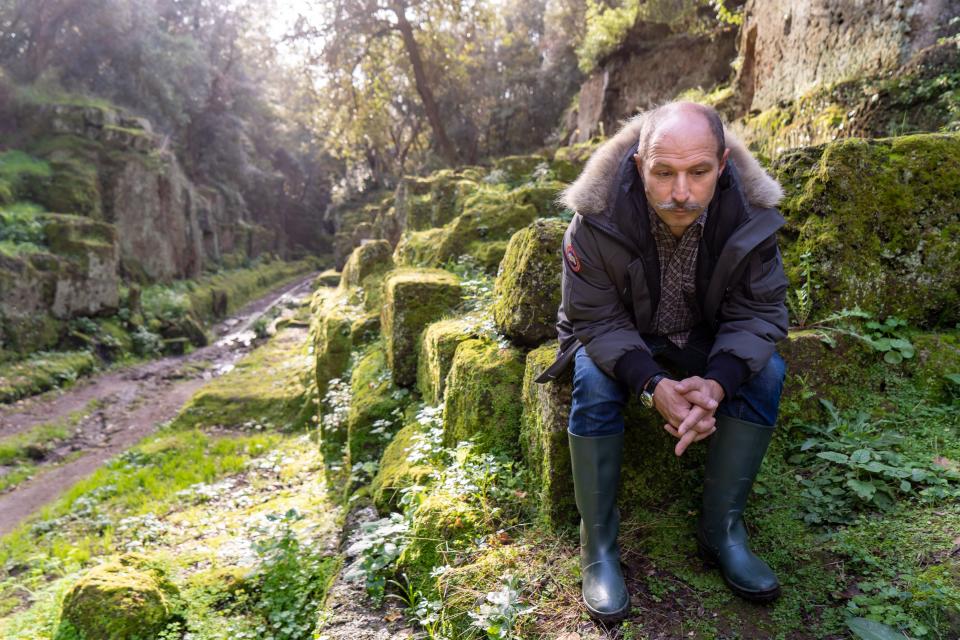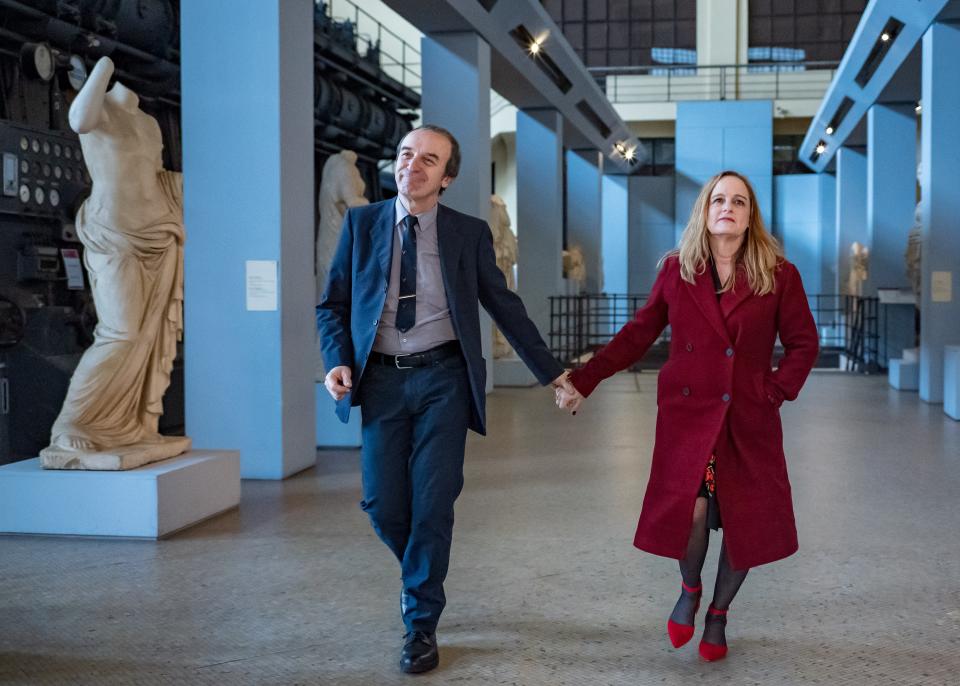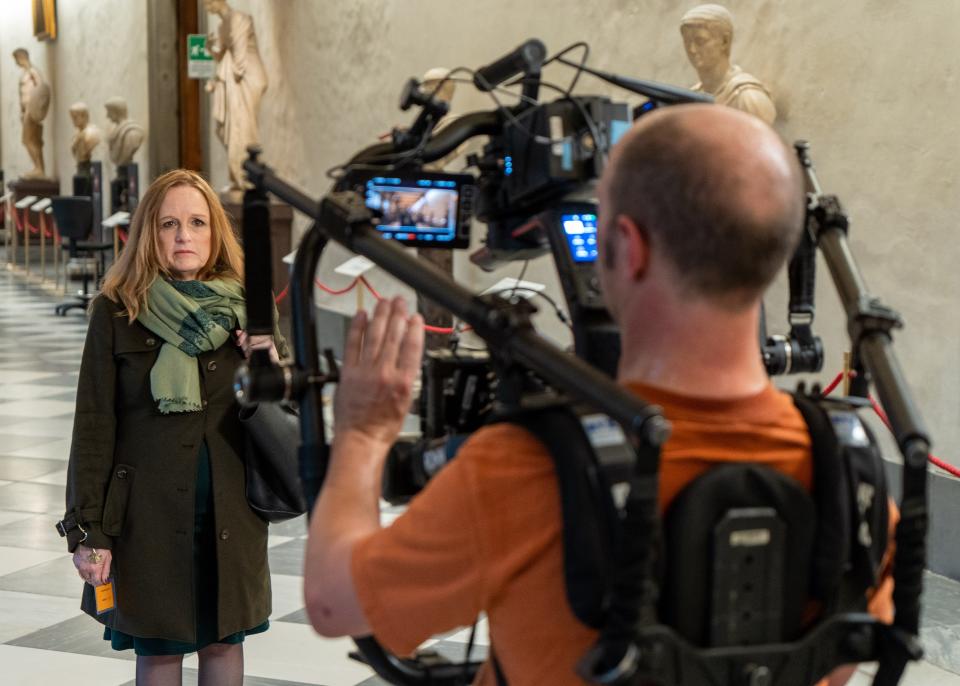New Documentary Spotlights the Detective Work Behind an Infamous Art Theft
Like drugs and guns, art theft is one of the highest-grossing criminal enterprises in the world. Further, it is thought that only five to ten percent of stolen works are ever recovered—a statistic that is both startling and saddening. Despite having no direct victims, art crime deprives people of their cultural heritage. In Hollywood movies, the process of tracking down treasured works typically unfolds with dizzying car chases, shootouts, and a romantic cliffhanger. The reality, however, is far more nuanced—though no less gripping—as comes to light in Lot 448, a new documentary premiering at this year’s virtual Tribeca Film Festival sponsored by Bulgari. In fact, the Italian jewelry house, known for its commitment to restoring cultural landmarks, plays a key role in the happy ending. Ahead of the premiere, AD spoke to the heroine at the film's center: Lynda Albertson, the forensic analyst who has made it her life mission to track down famous missing works of art and repatriate them to their rightful owners.
AD: How would you describe what you do? And what is the difference between a forensic analyst and an art detective?
Lynda Albertson: I am a forensic analyst who assists, where possible, law enforcement in uncovering useful details surrounding crimes against art and antiquities. A detective is an investigator who is usually a member of a law enforcement agency who works to find legally admissible evidence that is sufficient to obtain and sustain a conviction of those who are guilty and warrant prosecution. The few analysts who do this type of work don't have the same mandate as law enforcement, as we are not burdened with having to work on specific cases, or within a given jurisdiction, or by a structured deadline. That freedom allows me to piece together information from a variety of sources in order to assess threats that impact more than one country or jurisdiction and often involves developing transnational relationships, forming networks, and partnering with international, national, state, and local law enforcement communities.

AD: How did you fall into this career path?
LA: I started working with the Association for Research Into Crimes Against Art (ARCA) in the summer of 2011. But, in what seems like a lifetime ago, I had already worked with judicial authorities providing risk of flight and danger to the community assessments to the U.S. courts for arrestees in federal criminal cases.
AD: How do projects come your way? Do institutions or the victims of a theft seek you out? Or do you follow the crime?
LA: I start by hoarding information on stolen art and suspected illicit antiquities, gathering as much information as I can from a variety of sources. Then I try to make sense out of that vast amount of information. As I begin to analyze, I start to see patterns. Sometimes those patterns appear like single solitary raindrops of information, but when they coalesce into puddles I know I am on to something. When the puddles turn into streams, I know my hunch is worth sharing with police who have the legal mandate to pursue these cases within the limits of the law.
AD: How do you determine which projects to pursue?
LA: I will work on anything where I see a pattern developing, though I have a soft spot for artifact harvest countries that have been heavily looted for financial gains, like Italy and Egypt, or artifacts coming from conflict countries whose wars have made them vulnerable to plunder.

AD: What is the typical timeline of a project, or does it vary drastically? And do some cases remain open and unsolved?
LA: That's the rub to my work. Sometimes it is trying to get an object pulled from an auction before the sand runs out of my hourglass, and often I know something is looted, but there is insufficient evidence to force the seller's hand, or the statute of limitations has expired, or the country where the artifact was plundered cannot move quickly enough with the letters of rogatory needed for law enforcement in one country to assist law enforcement in another country.
When they do get away, sometimes I just wait until they come back on the market again or the information I gathered on one looted piece helps with another. In the end, any efforts, even the unsuccessful ones, are still worthwhile.

AD: Can you share the story of the Etruscan antefix that is the subject of the film? How did it come onto your radar?
LA: I received a lead from an informant who texted me about a month before its scheduled sale. I can't tell you who my source is, but this person told me that a dancing follower of Dionysus was coming up for auction and I might want to take a look at her. Looking at the names attached to this beautiful Meanad, I knew immediately that the U.K. dealers, Bruce and Ingrid McAlpine, could be problematic.
This British couple had dealings with a suspect dealer from Rome named Giacomo Medici, and another object looted from Italy, an Attic black-figured hydria, had previously come through the McAlpines purchased from Palladion Antike Kunst, a gallery operated by another disgraced ancient art dealer Gianfranco Becchina. The antefix was also clearly stylistically Etruscan. My hunch was it came from Cerveteri or the area around Veii, an important ancient Etruscan city situated on the southern limits of Etruria. I was also more than sure that if the auction house had actual documentation that the antefix came from a storied old collection, i.e. legal provenance, it would have listed those details in the lot's description. As there was no collection history prior to 1994, I felt confident that the dancing girl was removed from Italy in contravention of Italian law.
AD: Can you describe the range of emotions, first thinking it was lost forever, and then learning that Bulgari had bought it and was returning it to an institution where it could be enjoyed and appreciated by all?
LA: In terms of emotion, first I was heartbroken that it sold and alternately raw with anger that I didn't have more time to research her origins so that I could have given the Carabinieri enough evidence to have her pulled from sale, where they could have then negotiated to have sixth-century B.C. artifact voluntarily relinquished. While I don't think any country, or its kind and generous donors, should be forced to buy back their looted art, I am forever grateful to Bulgari for stepping in and seeing the value and rarity of her.

AD: You are the first female in your position. Why do you think more women haven't pursued or felt they could pursue this career path?
LA: Tracking stolen art as an analyst is a relatively new niche to the old profession of buying and selling art. Why women, or men too for that matter, haven't pursued this line of work is easy. There are currently zero governments funding the type of research that I do, meaning most forensic analysts interpreting the underbelly of the art world are grossly underpaid with other responsibilities, volunteering their skills on a catch-as-catch-can basis. That doesn't feed families.
AD: Where did you grow up and when did you move to Italy?
LA: I grew up in Little Havana, an area of south Florida where the majority of the community was Cuban, and had been coming back and forth to Italy for years before settling here in 2002. Growing up in that part of Miami always made me feel a bit like a foreigner, hearing other Latin languages and accents, learning about other people's cultures and losses.
My family also brought me up to have a deep respect for the Diné and the art of other Native American peoples. From the time I was very little, my father would tell me stories about Navajo artists and to respect and learn the meaning of their creations. I remember a time, growing up in the 1970s, reading about the tribal role of the nádleehi, a type of ceremonial singer and master weaver. The name literally means “one who constantly transforms.” Recognized at a young age by the ceremonial elders and their own family, they are male-bodied persons who have a feminine nature, which was perfectly acceptable in society. Years later, it made me think we had gender-fluid ancestors accepted by our forefathers long before we even had the labels we use today. That's what history gives us and that's why it's important to save. It teaches us we are the same, despite the rolling centuries.
AD: Can you describe the types of people who are typically behind art thefts?
LA: There is no one type of art criminal. Some can be poor farmers, just trying to put food on the table; others can be refugees, moving artwork from war-torn countries, selling it onward while trying to adjust to being a diaspora no one really wants. Sometimes art criminals are educated experts in their fields, wearing suits and ties, and dealing with museum curators on a first-name basis; others are scary organized-crime members, who broker guns and arms and use high-value stolen art as an insurance policy of sorts, as a means of lowering jail sentences when they get caught.
AD: Can you share anything about other cases you are currently working on?
LA: If I did, the market would shift, as it always does. When one typology of art becomes too hot, people in the market shift their focus to the next vulnerable beautiful thing. We have seen that with Greek, Roman, and Etruscan art; with ancient Khmer art from Cambodia; and with the idols of India. Yesterday's million-dollar Euphronios Krater is today's five-million-dollar dancing Shiva.
Originally Appeared on Architectural Digest

